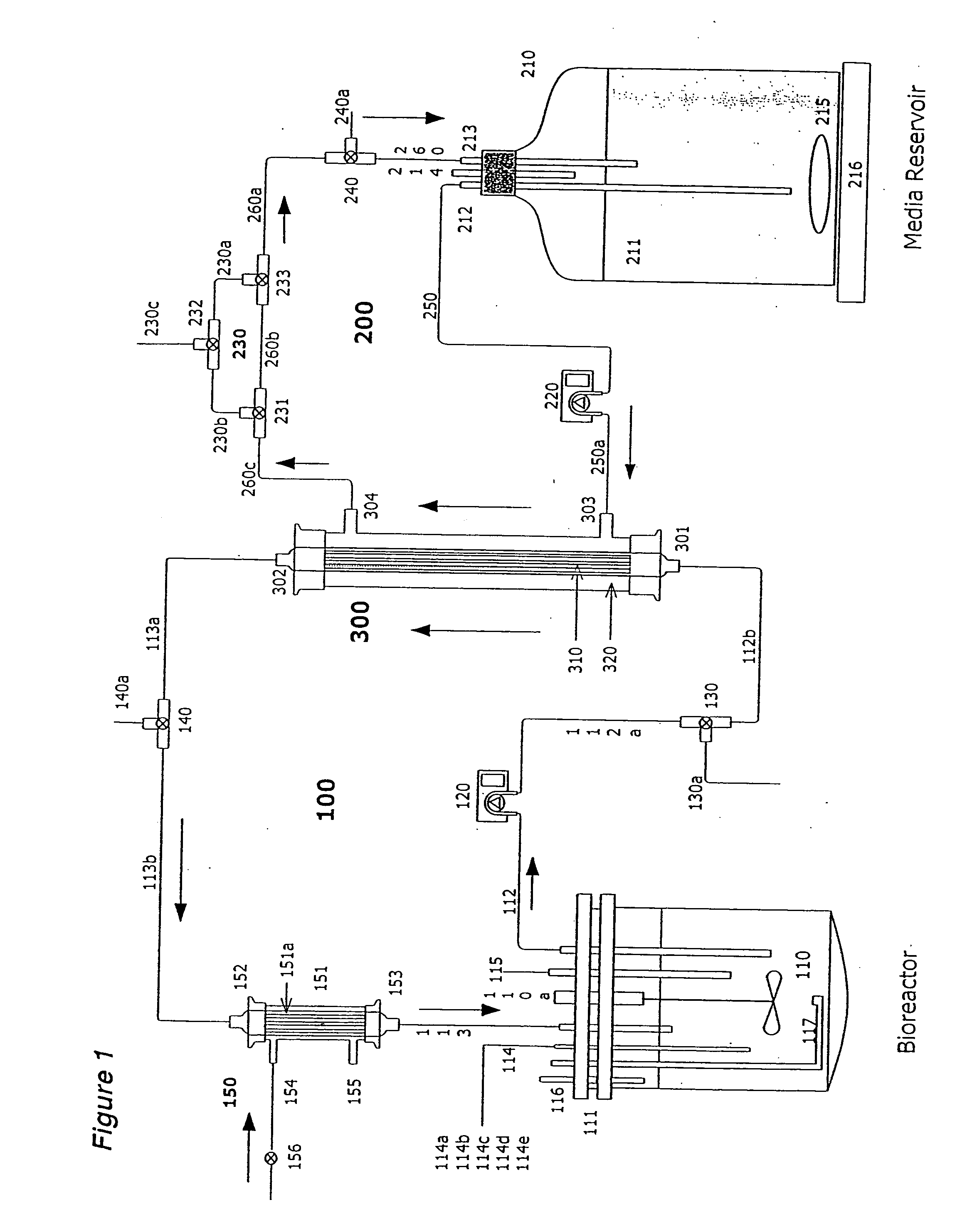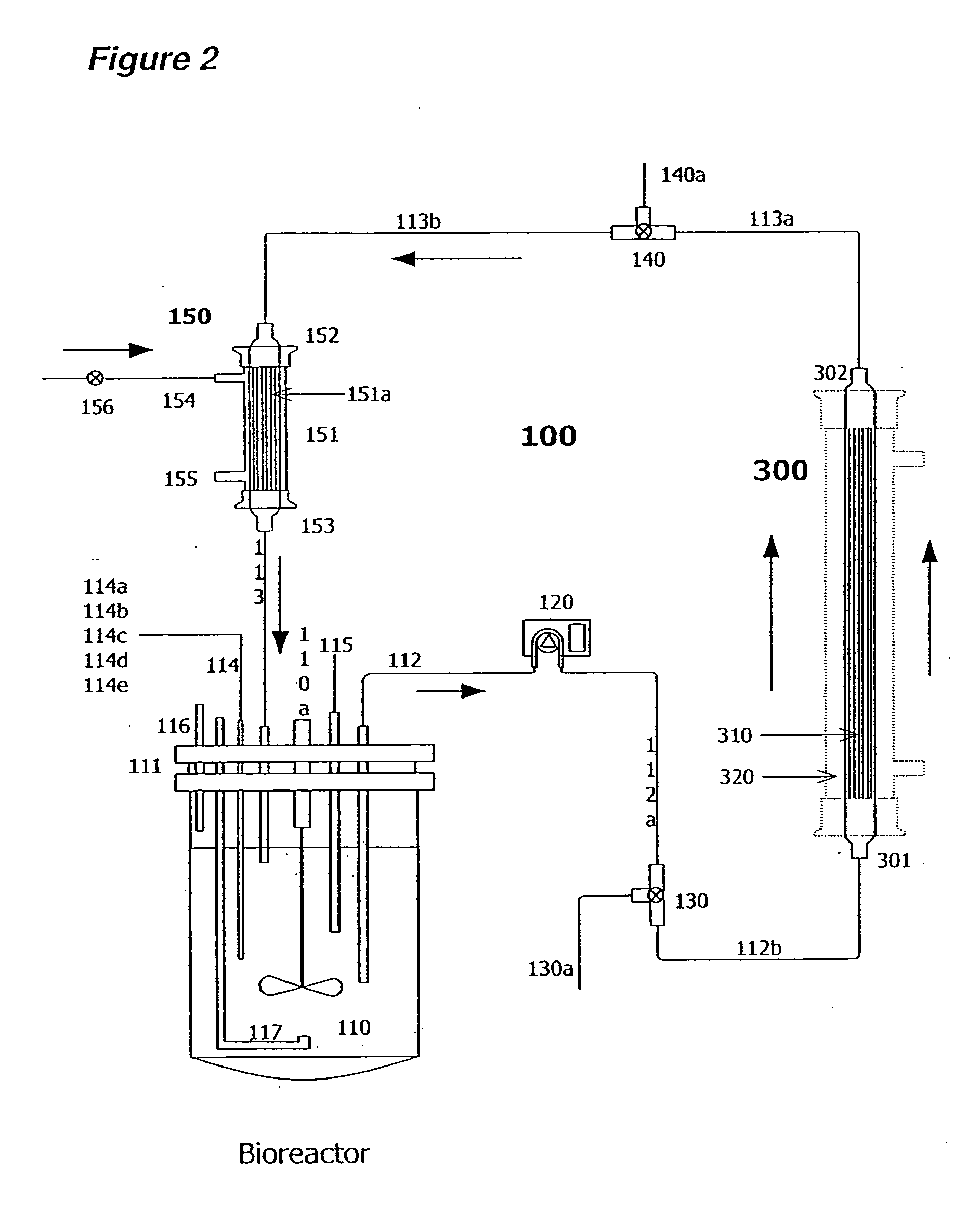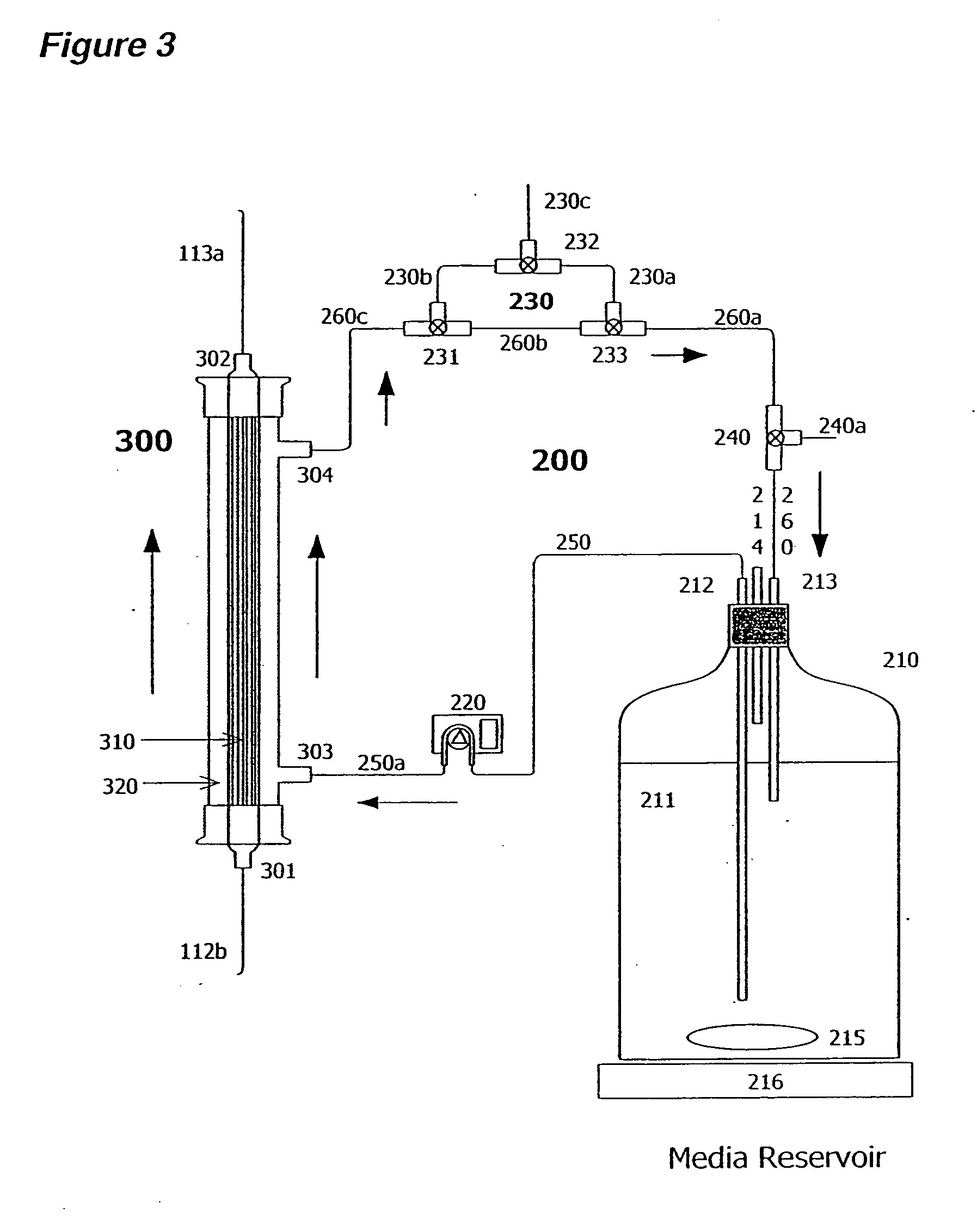Apparatus and methods for producing and using high-density cells and products therefrom
a technology of high-density cells and cells, applied in the direction of apparatus sterilization, specific use of bioreactors/fermenters, after-treatment of biomass, etc., can solve the problem of not being able to produce products as efficiently with clumped cells, and achieve the effect of high density
- Summary
- Abstract
- Description
- Claims
- Application Information
AI Technical Summary
Benefits of technology
Problems solved by technology
Method used
Image
Examples
example 1
Growth of Spodoptera frugiperda (Sf900+) Cells in High-Density Dialysis Bioreactor with In-Line Oxygen Sparging
[0171] Two liters of S. frugiperda Sf900+ (also called Sf900 in text) insect cells were seeded at 1.5×106 cells / mL (see FIG. 5). Oxygen was supplied initially by direct sparging at 60 L / hr and maintained at 60% saturation relative to air with an oxygen probe in the bioreactor connected to a solenoid regulating the flow of oxygen. The temperature of the cells was maintained at 28° C. and the cells were kept in suspension with an impeller rotating at 200 rpm. The pH of the media is generally 6.2. The cells doubled approximately every 24 hours and were 8.2×106 cells / mL by day 3. On day 3 the cells from the bioreactor were circulated at 100 m / min through silicon tubing connected to the lumen of a hollow fiber filter (A / G Technology, Corp; model CFP-6-D-8A, 0.65 micron pore size, 0.41 m2 membrane surface area) then back to the bioreactor with a peristaltic pump (Masterflex L / S ...
example 2
Yields of AcNPV Polyhedrin Protein in Standard and High-Density Cultures
[0173] One liter of Sf900+ cells were infected with AcNPV baculovirus using an MOI of 0.5 pfu / cell at the standard density of 1.5×106 cells / mL or at 16.0×106 cell / mL. The high-density culture was maintained in a 3-Liter dialysis bioreactor (Applicon) as described in Example 1 with continuous in-line sparging of oxygen at a flow rate of 9 L / hr. The oxygen was maintained in the high-density bioreactor throughout infection at the set point of 60% saturation of air. After 4 days the infected cells were collected and cellular proteins analyzed on SDS-polyacrylamide gels. The levels of polyhedrin protein were measured (FIG. 6) using a standard protein assay (BCA, Pierce). At 1.5×106 cells / ml, 800 milligrams of polyhedrin protein were produced per liter of infected cells. In the high-density culture over 10,374 mg produced per liter of polyhedrin was from 100 g of wet cells (biomass). This is the highest yield of poly...
example 3
Yields of Recombinant Hemagglutinin from Three Strains of Viral Influenza in Standard and High Density Cultures
[0174] Sf900+ cells were infected at an MOI of 0.5 with AcNPV baculovirus expression vectors for A / Texas / 36 / 91, A / Johannesburg / 33 / 94, or A / Nanchang / 933 / 95 viral influenza hemagglutinin at the standard density of 1.5×106 cells / mL or at 16.0×106 cell / mL in a high-density dialysis 3-liter bioreactor as described above in Example 1 and FIG. 1. At 3 days post infection the cells were collected and the proteins analyzed on SDS-polyacrylamide gels. Yields of total recombinant hemagglutinin proteins were determined using a scanning laser densitometry analysis (LKB Instruments) of the stained gels in comparison to known quantities of highly purified A / Texas / 36 / 91, A / Johannesburg / 33 / 94, or A / Nanchang / 933 / 95 recombinant hemagglutinins. The yields of total recombinant hemagglutinin from all three strains increased 9.3, 10.1, and 11.1 fold in the high density cultures (FIG. 7) with yie...
PUM
 Login to View More
Login to View More Abstract
Description
Claims
Application Information
 Login to View More
Login to View More - R&D
- Intellectual Property
- Life Sciences
- Materials
- Tech Scout
- Unparalleled Data Quality
- Higher Quality Content
- 60% Fewer Hallucinations
Browse by: Latest US Patents, China's latest patents, Technical Efficacy Thesaurus, Application Domain, Technology Topic, Popular Technical Reports.
© 2025 PatSnap. All rights reserved.Legal|Privacy policy|Modern Slavery Act Transparency Statement|Sitemap|About US| Contact US: help@patsnap.com



